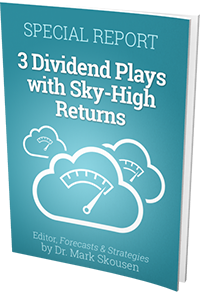A couple of weeks ago, I announced the good news that the U.S. Commerce Department’s Bureau of Economic Analysis (BEA), the government agency that compiles and publishes GDP every quarter, will be publishing a new economic statistic every quarter along with Gross Domestic Product (GDP). It’s called Gross Output (GO). I wrote an article on GO earlier this month.
On Wednesday, Oct. 30, I drove from my home in New York to Washington, D.C., and met with the BEA Director Steve Landefeld and three of his staffers to discuss the significance of Gross Output and to answer some questions I had.

GO is a broader measure of economic activity than GDP. GDP measures only final output, while GO is an attempt to measure spending or sales at all stages of production. I should mention that GO actually leaves out some sales at the wholesale and retail level; my own statistic, Gross Domestic Expenditures (GDE), is a more comprehensive measure of spending at all stages of production and is more than double GDP. For more information on the difference between GO and GDE, read my working paper on the subject.
Why is this important?
Several reasons:
1. Gross Output represents the intermediate stages of production necessary to produce final output (GDP). As such, it is almost double the size of GDP.
2. GO is significantly more volatile than GDP in the business cycle. For example, during the 2008-09 Great Recession and financial crisis, GDP fell 2.1%, but GO fell 7.6% — a big difference.
3. As a broader measure of economic activity, GO statistics are more consistent with economic growth theory. If you look solely at GDP, you would think that consumer spending drives the economy because it represents more than 70% of GDP… and business investment represents a poor 14%. However, if you look at GO (or my own GDE) figures, you see that business investment actually represents more than 50% of economic activity, and consumption only 30-40% of the economy. GO statistics confirm economic growth models that show that productive savings, capital investment and technology are far more important in determining economic growth than consumer or government spending.
For more information on how this new aggregate economic statistic GO (or my own GDE) plays in the economy, see the 4th edition of my new textbook, “Economic Logic” now available from Eagle Publishing by calling 1-800/211-7661. It retails for $69.95, but you pay only $34.95, plus $5 for shipping and handling (S&H). For orders outside of the United States, add an additional $15 S&H. When you order, be sure to mention code ECON4.
You Blew It! Are Minimum Wage Laws Racist?
“The minimum wage law is the most anti-black legislation today.” — Milton Friedman
Last week, the Wall Street Journal had two op-eds on efforts to raise the minimum wage in the United States (currently at $7.25 per hour). New York just raised its minimum wage to $9, and New Jersey wants to index its minimum wage to inflation (what I call institutionalizing youth and minority unemployment).
And now SeaTac, Wash., is voting on whether to raise the minimum wage to $15 an hour in that city. It’s getting out of hand.
On a national level, President Barack Obama wants to raise the minimum wage to $9 an hour.
In my economics classes, I do an exercise that is helpful to students to understand the issue, first using supply and demand curves to show how some benefit from the raise in wages (those who keep their jobs) and how others are hurt (those who lose their jobs). It is a great exercise in the use of supply and demand for wages and employment.
Then, I divide the blackboard into two sections (see below) and ask students to make a list of “genuine” ways to raise wages and another list of “artificial” ways to raise wages. Here’s what the two charts look like:
Genuine Ways to Raise Wages
- Ask for a raise
- Help the business grow or save money
- Get an advanced degree or additional training
- Work for a more profitable firm
(more profitable firms pay higher wages)
Artificial Ways to Raise Wages
- Raise the minimum wage by law
- Raise the living wage
- Join a labor union
- Restrict foreign immigration (competition)
I guess it’s easier for legislators to instantly raise wages by passing a minimum wage law than it is to encourage workers to become more skilled or for businesses to become more profitable.
Almost all studies by economists show that minimum wage laws do more harm than good, especially to minorities. Black teenage unemployment is still higher than 40% and has been moving up in direct proportion to increases in the federal minimum wage. Advocating a higher minimum wage may sound compassionate for minorities struggling to find employment, but it only helps those who keep their jobs. For those who lose their jobs or can’t find one, a $9 wage turns into a $0 wage. What’s compassionate about that?
Finally, I invite you to read my e-letter column “Did Janet Yellen Really Warn Us about the Housing Bubble?” from last week. I also invite you to comment about my column in the space provided below.

![[Gross Domestic Expenditures chart]](https://stage8.stockinvestor.com/wp-content/uploads/SkousenEconoLogicGDPAlternative100313-e1383244013787.jpg)

